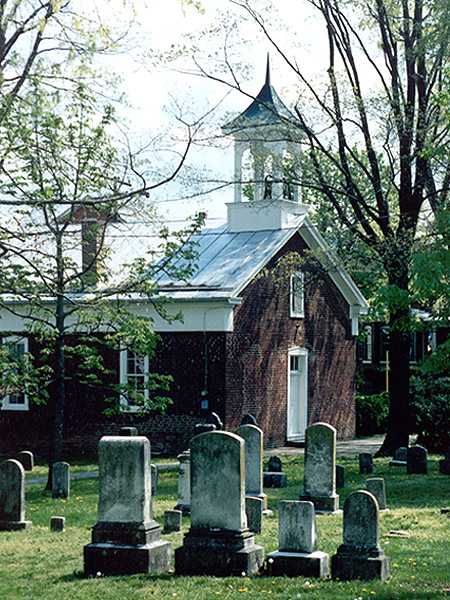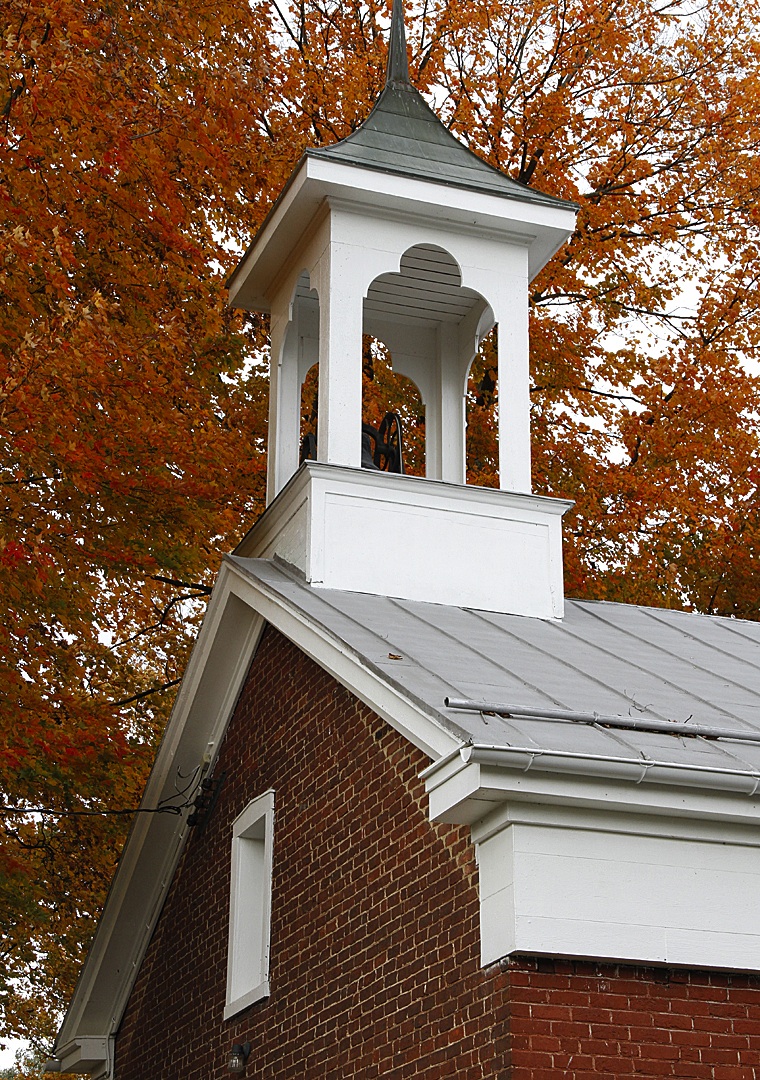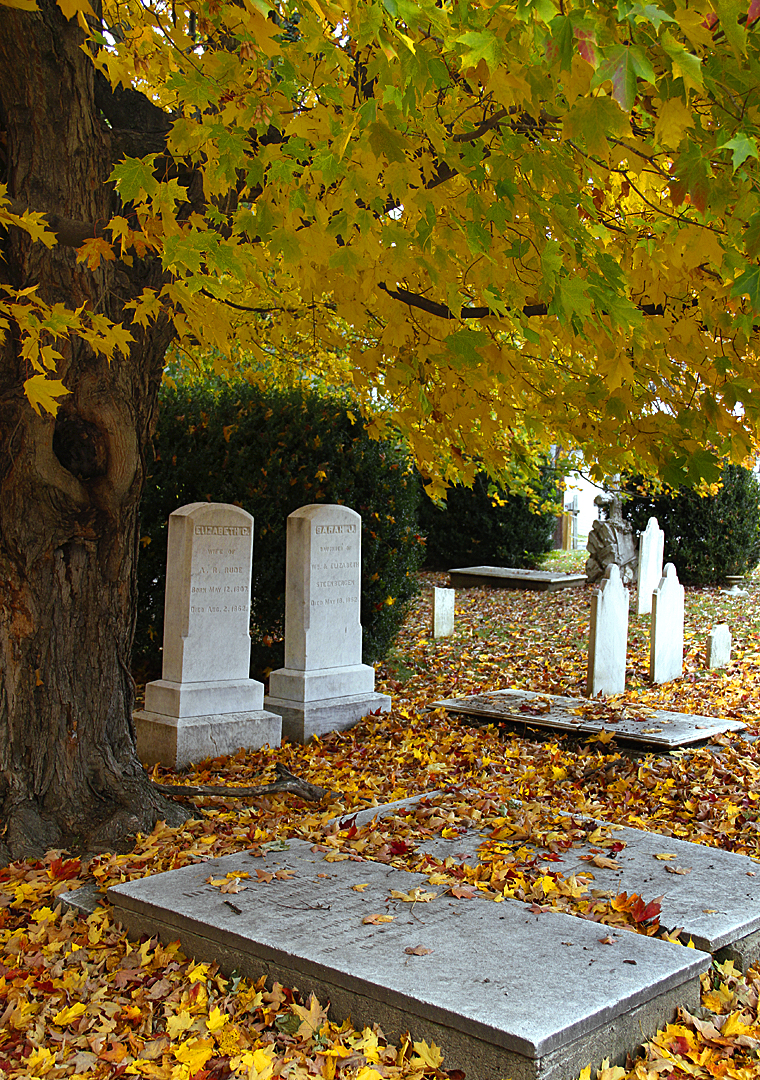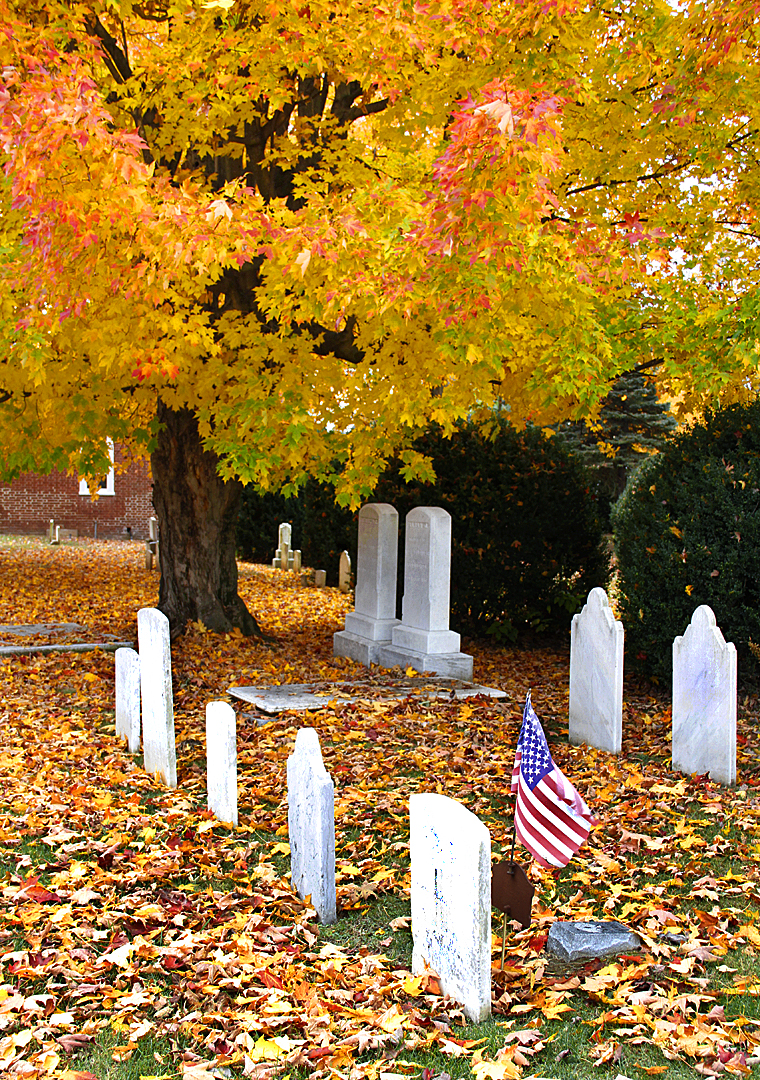




Mt Jackson's Historic Union Church
The Union Church in Mt. Jackson open to all, and free. Visitors are welcome anytime, but spring through October on weekends there are volunteers to show you around, and tell you something of the old church's history.
Located in downtown Mt. Jackson, beside the Town Hall
between Main Street (US 11) and King Street, the little brick church is the sort of place
stressed-out people dream of.
Early 1800s Structure
Built in the 1830s, it's nestled in a grove of old trees, with a cool breeze in
semi-permanent residence during the summer. There's an old cemetery with 19th-century
headstones for those who want to look for their Valley ancestors, and more genealogical
material inside the church, of an entirely different nature.
The old floors squeak slightly in places, and your
footsteps resound a bit louder than our modern ears are used to. It takes a few moments to
adjust to the silence, and to lose the sense of being an intruder.
Inside is a single cool room, with white walls and brown
wooden pews and no decoration except two candleholders hanging from the gallery overhang
just inside the entrance.
There's a simple altar at the back. Among the items on the
altar is a simple, woven collection basket. There's no sign that says so, but the people
of Mt. Jackson will take it kindly if you contribute to the upkeep of this tranquil place.
Open to all Denominations
This is exactly the kind of church which most Americans worshipped in, back when the
country was young, and some of the people in Mt. Jackson still worship here today. That's
why it's called a Union church; because it's open for use by all denominations.
Walk around the room, run your hand along the tops of the
pews. Sit down and think about lazy things as long as you like. Even if you don't have a
religious bone in your body, one restful hour in the peace and quiet of this place is
worth 13 sessions with a shrink.
It heals, in some indefinable way.
It wasn't always a place of peace for everyone who entered.
Even in this setting, some disquieting aspects of the Shenandoah Valley's turbulent
history intrude.
The first historic intrusion is a matter of architecture. A
narrow gallery, or balcony, runs the length of the front. Such galleries in public places
built during this ante-bellum period usually were reserved for "servants," which
is the euphemism slaveowners used to describe their African-American human property.
Later, when the Peculiar Institution fell out of favor, these church galleries came to be
called "choir lofts," even among sects that allowed no choirs. We don't have the
particulars on Union Church's balcony, but doubtless the volunteers at the front door can
fill you in. In other buildings, we have heard these galleries described as places for
children, or seating for women in sects which seated the sexes separately. As we said, we
draw no conclusions about the original purpose of Union Church's gallery, but the
probability still intrudes that once slaves sat there, receiving instruction in their
owners' religion of brotherly love.
The Witnesses of War Still Speak to Us
There were times, during the Civil War, when very uncivil things went on inside the Union
Church. There's evidence of these goings-on on the walls, left in the second disquieting
intrusion into this place of repose and refuge. Behind the altar, there's a large patch
where the paint and top layer of wall covering has been peeled off, and several similar,
smaller patches decorate the side walls. If you look more closely, you'll see that these
patches contain writing, in lead pencil, with names and messages and dates from the Civil
War years.
During The War, Union Church was used as a barrack for
Union troops, as the various Northern armies came and went through Mt. Jackson. Wounded
probably were cared for here, too, since they were cared for in practically every
structure that stood in Mt. Jackson in the years 1861-1865. We are told that several
families have bloodstained floorboards or rugs from those terrible days, which they saved
when buildings were torn down to make way for progress, and the owners wanted some
concrete reminder of their part in the tragedy of our National Cataclysm.
But whether wounded or passing through, soldiers stayed in
Union Church for a night or a few days, and as soldiers have throughout history, they left
their marks for posterity. Some are simple autographs and dates. Some are messages in the
vein of "I slept here on my way to Richmond." There's one message, we are told,
written by a woman who was begging for information about her missing soldier husband and
other Mt. Jackson men who were lost in the maelstrom of war.
If you have trouble thinking of the Civil War as a real,
human event, go to Union Church and look at the writings. Try to read the names and the
messages. Try to picture the grimy, hollow-eyed men in muddy uniforms, propping their
muskets against the wall you are looking at, standing where you are standing, scrunched up
against the wall, wetting a lead pencil on their tongue, and writing these time-machine
messages to you.
After they wrote their names on the walls of Union Church,
some of them marched away to Sharpsburg, or Winchester, or Port Republic, or Gettysburg,
and died.
All that's left of them now is a grave somewhere, one among
thousands upon thousands in a seldom-visited national cemetery, and a scribbled name on a
wall.
A Memorial to Former Enemies
The people of Mt. Jackson deserve our thanks and our praise for maintaining this shrine,
not as a roped-off, static museum exhibit, but as a useful part of daily life in which the
past and present mix freely, to the enrichment of both.
It is somehow typical of the Civil War, and the confused, contradictory emotions it still evokes in us, that these men should be memorialized and immortalized by a church whose walls they defaced, and that a town which suffered terribly under their temporary domination should so painstakingly preserve their memories.
They wrote on these walls because they wanted to be
remembered, and as long as Union Church stands, there will always be at least one place on
earth that still records their passing, and their humanity.
If you want to feel the Civil War marching up your spine,
go to Mt. Jackson's Union Church.
410_528_529_530
